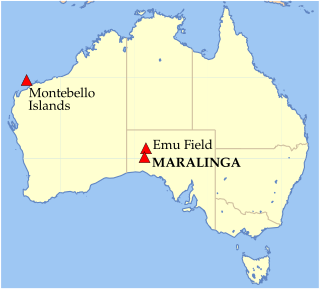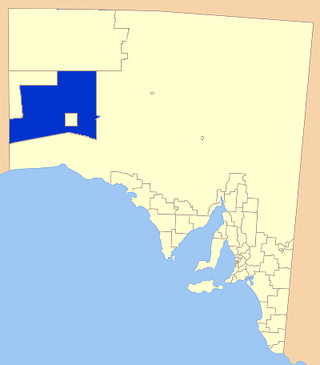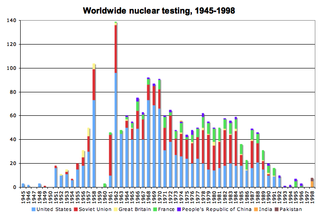Related Research Articles

Trinity was the code name of the first detonation of a nuclear weapon, conducted by the United States Army at 5:29 a.m. MWT on July 16, 1945, as part of the Manhattan Project. The test was of an implosion-design plutonium bomb, nicknamed the "gadget", of the same design as the Fat Man bomb later detonated over Nagasaki, Japan, on August 9, 1945. Concerns about whether the complex Fat Man design would work led to a decision to conduct the first nuclear test. The code name "Trinity" was assigned by J. Robert Oppenheimer, the director of the Los Alamos Laboratory, inspired by the poetry of John Donne.

The parable of the Good Samaritan is told by Jesus in the holy Gospel of Luke. It is about a traveler who is stripped of clothing, beaten, and left half dead alongside the road. First, a Jewish priest and then a Levite come by, but both avoid the man. Finally, a Samaritan happens upon the traveler. Although Samaritans and Jews were generally antagonistic towards each other, the Samaritan helps the injured man. Jesus is described as telling the parable in response to a provocative question from a lawyer, "And who is my neighbor?", in the context of the Great Commandment. The conclusion is that the neighbor figure in the parable is the one who shows mercy to their fellow man and/or woman.

The Atomic Cafe is a 1982 American documentary film directed by Kevin Rafferty, Jayne Loader and Pierce Rafferty. It is a compilation of clips from newsreels, military training films, and other footage produced in the United States early in the Cold War on the subject of nuclear warfare. Without any narration, the footage is edited and presented in a manner to demonstrate how misinformation and propaganda was used by the U.S. government and popular culture to ease fears about nuclear weapons among the American public.

Enewetak Atoll is a large coral atoll of 40 islands in the Pacific Ocean and with its 296 people forms a legislative district of the Ralik Chain of the Marshall Islands. With a land area total less than 5.85 square kilometers (2.26 sq mi), it is no higher than 5 meters (16.4 ft) and surrounds a deep central lagoon, 80 kilometers (50 mi) in circumference. It is the second-westernmost atoll of the Ralik Chain and is 305 kilometers (190 mi) west from Bikini Atoll.

The Atomic Age, also known as the Atomic Era, is the period of history following the detonation of the first nuclear weapon, The Gadget at the Trinity test in New Mexico, on 16 July 1945, during World War II. Although nuclear chain reactions had been hypothesized in 1933 and the first artificial self-sustaining nuclear chain reaction had taken place in December 1942, the Trinity test and the ensuing bombings of Hiroshima and Nagasaki that ended World War II represented the first large-scale use of nuclear technology and ushered in profound changes in sociopolitical thinking and the course of technological development.

Operation Crossroads was a pair of nuclear weapon tests conducted by the United States at Bikini Atoll in mid-1946. They were the first nuclear weapon tests since Trinity on July 16, 1945, and the first detonations of nuclear devices since the atomic bombing of Nagasaki on August 9, 1945. The purpose of the tests was to investigate the effect of nuclear weapons on warships.

The Semipalatinsk Test Site, also known as "The Polygon", was the primary testing venue for the Soviet Union's nuclear weapons. It is located in Zhanasemey District, Abai Region, Kazakhstan, south of the valley of the Irtysh River. The test site was part of the former Kazakh SSR. The scientific buildings for the test site were located around 150 km (93 mi) west of the town of Semipalatinsk, later renamed Semey, near the border of East Kazakhstan Region and Pavlodar Region. Most of the nuclear tests taking place at various sites further to the west and the south, some as far as into Karagandy Region.

Maralinga, in the remote western areas of South Australia, was the site, measuring about 3,300 square kilometres (1,300 sq mi) in area, of British nuclear tests in the mid-1950s.

Operation Hurricane was the first test of a British atomic device. A plutonium implosion device was detonated on 3 October 1952 in Main Bay, Trimouille Island, in the Montebello Islands in Western Australia. With the success of Operation Hurricane, Britain became the third nuclear power, after the United States and the Soviet Union.

Between 1956 and 1963, the United Kingdom conducted seven nuclear tests at the Maralinga site in South Australia, part of the Woomera Prohibited Area about 800 kilometres (500 mi) north west of Adelaide. Two major test series were conducted: Operation Buffalo in 1956 and Operation Antler the following year. Approximate weapon yields ranged from 1 to 27 kilotons of TNT. The Maralinga site was also used for minor trials, tests of nuclear weapons components not involving nuclear explosions. Kittens were trials of neutron initiators; Rats and Tims measured how the fissile core of a nuclear weapon was compressed by the high explosive shock wave; and Vixens investigated the effects of fire or non-nuclear explosions on atomic weapons. The minor trials, numbering around 550, ultimately generated far more contamination than the major tests.
Half-life is a mathematical and scientific description of exponential or gradual decay.

Dennis O'Rourke was an Australian cinematographer and documentary filmmaker.
Kimberley Joseph is a Canadian Australian actress who is based in the United States. Joseph was born in Canada, brought up on the Gold Coast in Australia and educated in Switzerland. After returning to Australia, she began a degree at Bond University but dropped out at the age of 19 when she was cast in the soap opera Paradise Beach. She had no formal acting training but appeared in the soap for the 18 months it was produced. After Paradise Beach ended, she had casual work on Hey Hey It's Saturday before co-hosting the popular Seven Network series Gladiators.

The Maralinga Tjarutja, or Maralinga Tjarutja Council, is the corporation representing the traditional Anangu owners of the remote western areas of South Australia known as the Maralinga Tjarutja lands. The council was established by the Maralinga Tjarutja Land Rights Act 1984. The area is one of the four regions of South Australia classified as an Aboriginal Council (AC) and not incorporated within a local government area.

Corbin Harney was an elder and spiritual leader of the Newe people. Harney reportedly inspired the creation in 1994 of the Shundahai Network, which works for environmental justice and nuclear disarmament. The Shundahai Network plays a key role in organizing non-violent civil disobedience aimed at bringing about the closure of the Nevada Test Site, used for testing nuclear weapons, which is located on Western Shoshone land.

Radio Bikini is a 1988 American documentary film directed by Robert Stone. It was nominated for an Academy Award in 1988 for Best Documentary Feature. It was later aired on the PBS series The American Experience.

The application of nuclear technology, both as a source of energy and as an instrument of war, has been controversial.

Dark Circle is a 1982 American documentary film directed and produced by Judy Irving, Christopher Beaver and Ruth Landy that focuses on the connections between the nuclear weapons and the nuclear power industries, with a strong emphasis on the individual human and protracted U.S. environmental costs involved. A clear point made by the film is that while only two bombs were dropped on Japan, many hundreds were exploded in the United States.

Nuclear testing at Bikini Atoll consisted of the detonation of 24 nuclear weapons by the United States between 1946 and 1958 on Bikini Atoll in the Marshall Islands. Tests occurred at 7 test sites on the reef itself, on the sea, in the air, and underwater. The test weapons produced a combined yield of about 75 Mt of TNT in explosive power.

The Bomb is a 2015 American documentary film about the history of nuclear weapons, from theoretical scientific considerations at the very beginning, to their first use on August 6, 1945, to their global political implications in the present day. The film was written and directed by Rushmore DeNooyer for PBS. The project took a year and a half to complete, since much of the film footage and images were only recently declassified by the United States Department of Defense.
References
- ↑ "Half Life". Documentary Australia Foundation. Archived from the original on 16 October 2009. Retrieved 16 April 2010.